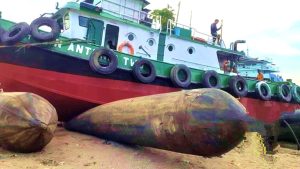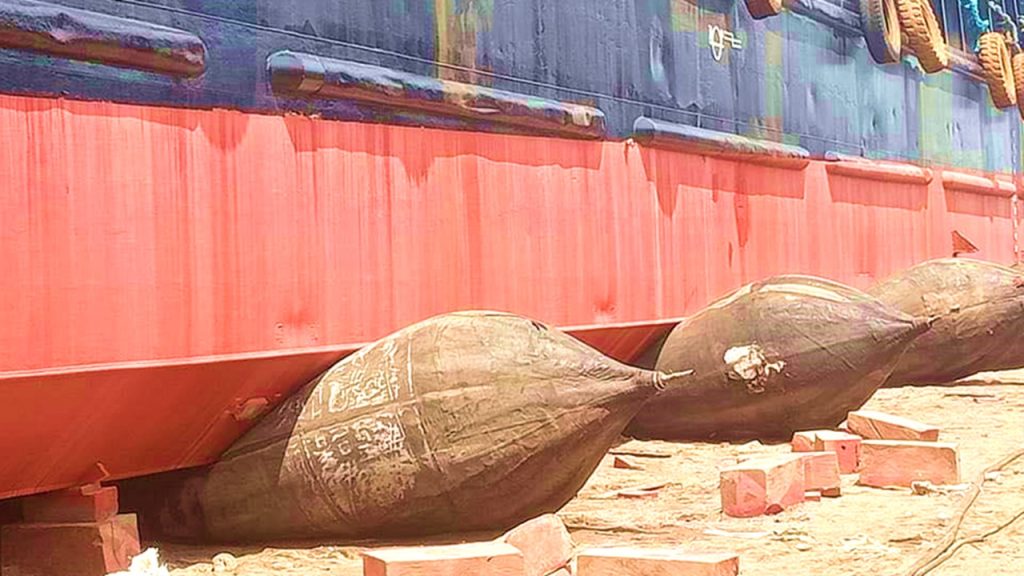When it comes to the maritime industry, the hull of a vessel is its lifeline – protecting it from treacherous waters and ensuring a smooth journey. However, over time, wear and tear can leave these mighty structures in need of repairs. Whether you are an experienced Filipino ship owner or a curious sea enthusiast, understanding how to navigate the world of ship hull repairs is essential. In this ultimate guide, we will delve into the intricacies of hull maintenance and explore the top-notch services available in the Philippines, a country renowned for its expertise in ship repair and maintenance. From expert advice on identifying common hull issues to recommendations on reputable repair facilities, this comprehensive article aims to equip readers with everything they need to know when it comes to preserving their vessels’ integrity at sea.
Click here to view our ship hull repairs and marine services in Cavite, Philippines.
The Importance of Ship Hull Repairs
Ship hull repairs in the Philippines may not always be the most glamorous aspect of maintaining a ship, but they play a crucial role in ensuring the vessel’s safety and longevity. The hull is the outermost part of the ship that comes into direct contact with water, weather conditions, and constant use. Over time, it can suffer from wear and tear, corrosion, and other damages that compromise its structural integrity. Neglecting or delaying hull repairs can have dire consequences, including increased vulnerability to leaks, reduced efficiency in propulsion systems, and even compromising the safety of crew members.
One of the key reasons why ship hull repairs in Cavite, Cebu, Subic Bay, and Manila are imperative is to ensure that ships remain seaworthy. A damaged or weakened hull puts both the crew and cargo at risk when navigating through rough seas or adverse weather conditions. By promptly repairing any cracks, dents, or other forms of damage on the ship’s outer shell, maritime operators can enhance vessel stability and prevent potential disasters.
Furthermore, investing time and resources into regular inspections and timely repairs helps in maintaining optimum fuel efficiency. A damaged hull can increase drag on a vessel as it moves through the water since exposed surfaces create resistance against forward movement. This added resistance not only increases fuel consumption but also slows down travel speed. By addressing minor damages early on through hull repairs, such as patching up holes or applying protective coatings to prevent corrosion spread – companies can save substantial amounts on fuel costs while improving overall environmental sustainability.

Types of Ship Hull Damage in the Philippines
When it comes to ship hull damage in the Philippines, there are various types that owners and operators need to be aware of. One common issue is corrosion, which occurs due to the exposure of the hull to seawater over time. This can lead to deterioration and weakening of the metal structure, increasing the risk of further damage. Another type of hull damage is caused by grounding or collision with other vessels, rocks, or underwater hazards. These incidents can result in structural fractures and punctures on the ship’s exterior, requiring immediate repairs.
Additionally, fatigue cracks can develop in a ship’s hull as a result of constant stress and loading cycles. This type of damage is common in older vessels or those that have been operating under extreme conditions for extended periods. It is important for Filipino ship owners and operators to regularly inspect their hulls for signs of cracking or buckling to prevent potential accidents or delays in operations.
It is worth noting that properly maintaining a ship’s coating system can help reduce the risk of these types of damages. Regular inspections and timely repairs are essential for extending a vessel’s lifespan and ensuring safe operations at sea. By staying proactive about monitoring possible issues, shipping companies in the Philippines can mitigate unforeseen expenses associated with extensive repairs while ensuring smooth sailing throughout their journeys.

Common Causes of Ship Hull Damages in the Philippines
Ship hull damages in the Philippines can be caused by a variety of factors, including harsh weather conditions, shallow waters, and human error. The country is prone to typhoons and tropical storms, which can result in high winds and turbulent seas that put significant stress on ship hulls. These extreme weather events can lead to collisions with other vessels or cause ships to run aground, resulting in substantial damage.
Additionally, the Philippines has numerous shallow waters that pose a threat to ships’ hulls. This is especially true in areas such as Cebu, Bacolod, Zamboanga, Iloilo, and Palawan, where coral reefs are prevalent. Ships that venture too close to these fragile ecosystems risk damaging their hulls or even getting stuck. Furthermore, human error plays a significant role in ship hull damage as well. Poor navigational decisions or mistakes made during docking procedures can lead to collisions with piers or other structures, causing extensive damage to the ship’s hull.
To prevent such damages from occurring frequently, it is essential for shipping companies operating in the Philippines to invest in proper training for their crew members and implement strict safety protocols. Additionally, regular inspections and maintenance should be conducted on all vessels to detect any potential issues before they escalate into more significant problems. By addressing these common causes of ship hull damages head-on, shipping companies can ensure smooth sailing operations while minimizing costly repairs and downtime due to accidents or negligence.

Steps for Assessing Ship Hull Damage
When it comes to assessing ship hull damage, a professional ship repair company like Amaya Dockyard & Marine Services Inc. follows a systematic approach to ensure accurate evaluation and effective repairs. The first step is inspecting the exterior of the hull for any visible signs of damage. This includes looking for cracks, dents, or areas where the paint may have chipped off.
Next, a detailed examination of the interior of the ship’s hull is conducted. This involves using specialized equipment such as ultrasound scanners and thickness gauges to measure the thickness of steel plates and detect any hidden structural defects. By assessing both the exterior and interior of the hull, Amaya Dockyard can get a comprehensive understanding of the extent and nature of the damage.
Based on their findings, Amaya Dockyard then creates a thorough report detailing all necessary repairs and recommendations for maintenance or replacement parts. This ensures that clients have a clear picture of what needs to be done in order to restore their ship’s structural integrity with years of experience and expertise in ship repair services, companies like Amaya Dockyard & Marine Services Inc.

Ship Hull Repairs Step-by-Step Process
Here is a list of the typical process of ship hull repairs in the Philippines.
Step 1. Inspecting and Assessing the Damage:
The first step in ship hull repairs is conducting a thorough inspection to assess the extent of the damage. This involves visually inspecting the hull for cracks, dents, or other signs of wear and tear. In some cases, close-up inspections using non-destructive testing methods such as ultrasound or magnetic particle testing may also be necessary to detect hidden damages that are not visible to the naked eye. This initial assessment helps in developing an accurate repair plan and determining the materials and techniques required.
Step 2. Preparation and Surface Cleaning:
Once the damages have been identified, it is crucial to prepare the surface of the hull before starting any repair work. This usually involves cleaning off marine growth, rust, paint debris, and other contaminants that hinder proper adhesion between repair materials and the surface. Surface preparation may involve abrasive blasting techniques like sandblasting or hydroblasting to remove old coatings and achieve a clean substrate for ship hull repairs. Proper surface preparation ensures that subsequent repair materials adhere well, leading to longer-lasting results.
Step 3. Repair Techniques:
There are several different techniques used in ship hull repairs depending on factors such as the type of damage incurred and the vessel’s construction material. Common repair methods include welding or cutting out damaged sections of steel plates and replacing them with new ones; patching cracks with specialized epoxy putties; applying fiberglass patches for minor damages on composite structures; or using bolts or rivets for fastening structural components together securely.
Step 4. Material Selection:
The choice of repair materials plays a crucial role in ensuring the longevity and effectiveness of ship hull repairs.
The materials used for ship hull repairs must be carefully selected to withstand the harsh marine environment and provide structural integrity. Factors such as the type of vessel, its construction material, and the severity of damage must be considered when choosing repair materials.
For steel hull repairs, it is important to select high-quality steel plates that are compatible with the existing structure. These plates should have similar strength and corrosion resistance properties to ensure seamless integration.
Step 5. Applying Filler and Smoothing It Out:
Once all the necessary repairs and replacements have been made to the ship’s hull, the next step is to apply filler and smooth it out. The purpose of filler is to fill in any imperfections and create a smooth surface for painting. There are various types of fillers available, including epoxy-based fillers and polyester-based fillers. It is important to choose the right type of filler based on the material of the hull.
Before applying filler, it is crucial to prepare the surface properly. This includes cleaning and sanding down any rough spots or old paint that may be present. Once the surface is clean and dry, you can begin applying the filler using a putty knife or spatula. Apply a thin layer first, filling in any cracks or holes in an even manner. Allow this layer to dry before applying another layer if necessary.
The smoothing-out process requires precision and patience. Using sandpaper or a sanding block, gently sand down any excess filler until it is level with the surrounding area. Take care not to remove too much material, as this can result in unevenness or weak spots in the hull. Keep checking your progress by running your hand over the surface to ensure it feels smooth and even.
Step 6. Sanding and Priming the Repaired Area:
Sanding and priming are crucial steps in the ship hull repair process. After the damaged area has been properly cleaned and prepared, it is necessary to smooth out any rough edges and imperfections. Sanding helps create a level surface for the primer to adhere to, ensuring a seamless finish once the repair job is complete.
When sanding, it’s essential to use the right technique and tools. Coarse-grit sandpaper can be used initially to remove larger imperfections, followed by finer-grit sandpaper for a smoother surface. It’s vital to keep a consistent pressure while sanding and avoid excessive force that could damage the surrounding area.
Once the repaired area has been sanded down, it’s time to apply primer. Primer not only provides an additional layer of protection against corrosion but also helps with paint adhesion. Using an appropriate marine-grade primer ensures long-lasting results even in harsh marine environments. Applying multiple coats of primer may be necessary, with each coat requiring proper drying time before adding another layer.
Step 7. Applying a New Coat of Paint:
It’s time to give your ship hull a fresh look with a new coat of paint. This step may seem simple, but take note – it plays a crucial role in protecting your vessel against corrosion and enhancing its overall appearance.
When choosing the right type of paint for your ship hull, consider factors such as the type of water it will be sailing in and the climate conditions it will encounter. Epoxy-based paints are popular for their durability and ability to resist water damage. Additionally, anti-fouling paints can be applied to prevent marine organisms from attaching themselves to the hull, reducing drag and increasing fuel efficiency. And remember – don’t forget to choose an appropriate color that complies with international maritime regulations!
Before applying the new coat of paint, make sure you have properly cleaned the surface by removing any loose particles or scales from previous layers. Use sandpaper or abrasive tools for this task if necessary. It’s important to have a smooth surface before proceeding.
To ensure an even application of paint on large surfaces like ship hulls, many professionals use airless spray systems. These machines create a fine mist that evenly coats the entire area without streaks or visible brush marks.
As you apply each layer of paint, make sure you follow proper drying times between coats as recommended by the manufacturer. This will allow each layer to bond and dry properly fully.
Step 8. Inspecting the Repaired Area for Quality and Durability:
After the ship hull repairs have been completed, it is crucial to inspect the repaired area for quality and durability thoroughly. This step ensures that the repair work meets industry standards and guarantees the safety of the vessel. One important aspect to look out for during inspection is the smoothness of the repaired surface. Any unevenness or rough patches can create turbulence in water flow, potentially affecting the ship’s performance.
Another key factor to assess is the adhesion of new coatings or sealants applied during the repair process. These materials are essential for protecting the hull against corrosive elements, so any signs of peeling or detachment could compromise their effectiveness. In addition to visual inspections, non-destructive testing methods such as ultrasonic testing can be employed to check for hidden defects like cracks or voids that may not be readily visible.
Furthermore, it is also crucial to conduct a durability test on the repaired area by subjecting it to various stressors, such as wave impact simulations or pressure tests. This will help ensure that the repairs can withstand real-world operating conditions and continue providing reliable service over time.
By meticulously inspecting ship hull repairs for quality and durability, shipowners can have peace of mind knowing that their vessels are safe and seaworthy. Neglecting this step could lead to costly repercussions in terms of both monetary expenses and potential hazards at sea. Investing time and resources into meticulous inspection ultimately pays off by extending a vessel’s lifespan while enhancing its overall performance on the water.
Step 9. Conducting a Final Inspection Before Taking the Vessel Back to Sea:
This step ensures that all necessary repairs have been completed properly and that the vessel is safe and ready for navigation.
During the final inspection, attention should be paid to various aspects such as welds, coatings, and structural integrity. Inspectors will carefully examine the newly repaired areas to ensure that they are free from defects and adhere to industry standards. In addition, they will also check for any signs of damage or corrosion in adjacent areas that may need repair.
Furthermore, it is vital to inspect the coating system applied during the repair process closely. A proper coating helps protect the hull from corrosion and other damages caused by exposure to water and harsh marine conditions. An experienced inspector will verify if all specified coatings have been properly applied at the correct thickness levels with no visible defects or unevenness.
Successfully completing this essential final inspection gives Filipino ship owners peace of mind, ensuring their vessel is in optimal condition before returning to sea. It also emphasizes a commitment to safety while adhering to regulatory requirements associated with ship maintenance in order to prevent accidents at sea. Conducting thorough inspections ensures safe navigation for both crew members and cargo, preserving both lives and livelihoods at stake—all part of maintaining efficient operations within international maritime trade standards.

The Best Materials for Ship Hull Repairs
Another important aspect to consider during ship hull repairs is the choice of materials. The durability and quality of the materials used can greatly impact the longevity and overall performance of a ship in the Philippines. One popular material that has gained recognition in recent years is fiberglass-reinforced polymer (FRP).
FRP offers numerous benefits, including its lightweight nature, high strength-to-weight ratio, and excellent corrosion resistance. This makes it an ideal choice for ship hull repairs as it can withstand harsh marine environments and prevent further damage caused by corrosion or rusting. Additionally, FRP is highly customizable, allowing for seamless repairs that match the original design of the hull.
In addition to FRP, another material worth considering for ship hull repairs is epoxy coating. Epoxy coatings are known for their exceptional adhesive properties and resistance to chemicals and UV rays. This makes them suitable for repairing cracks or damaged areas on a ship’s hull, as they provide a strong bond with the surface while also protecting against future damages.
By utilizing innovative materials such as FRP and epoxy coatings for ship hull repairs in the Philippines, not only can vessels be restored to their former glory but they will also benefit from enhanced performance characteristics ensuring prolonged service life within demanding marine environments.

Shipyard Selection and Hiring Contractors in the Philippines
When it comes to ship hull repairs, selecting the right shipyard and hiring reliable contractors is of utmost importance. The Philippines offers a myriad of options for ship repair and maintenance services, but not all shipyards are created equal. It’s essential to consider factors such as the yard’s facilities, infrastructure, experience, reputation, and the expertise of their team.
One of the key aspects to examine when choosing a shipyard is its track record in handling similar types of vessels. Different ships have different requirements and specifications when it comes to repairs and maintenance. For instance, if you’re looking for a yard that specializes in tanker repairs, ensuring that they have ample experience with tanker vessels would be crucial. By selecting a specialized shipyard that has successfully repaired similar ships before, you can rest assured that they possess the necessary expertise and knowledge required for your specific project.
In addition to considering the capabilities of individual shipyards, it’s also important to assess their ability to provide sufficient dry dock space or berthing facilities. Ship hull repairs often require docking or off-loading cargo operations so ensuring that the shipyard has adequate infrastructure plays a vital role in determining its suitability for your needs. Moreover, examining their safety protocols and certifications can help ensure compliance with international standards during both dry docking activities and while undergoing hull repairs.

Tips for Cost-Effective Ship Hull Repairs in the Philippines
When it comes to ship hull repairs in the Philippines, cost-effectiveness is a key consideration for both Filipino ship owners and operators. Sailing these vast waters requires vessels to be in optimal condition, but maintenance costs can quickly add up. Here are some tips for cost-effective ship hull repairs in Cavite, Metro Manila, Batangas, Subic Bay, Davao, and Navotas:
1. Plan Ahead: Conduct regular inspections and keep track of any potential issues or areas that may require repair in the future. By identifying problems early on, you can plan repairs during off-peak periods when prices may be lower.
2. Explore Local Service Providers: While there are reputable international companies available, local service providers often offer more competitive rates without compromising on quality. Research and engage with local repair yards and professionals known for their expertise and reliability.
3. Consider DIY Options: For minor damages or surface-level issues, taking a hands-on approach may prove cost-effective. Investing in training your crew members to handle basic hull repairs can reduce the need for external contractors and save money in the long run.
By implementing these strategies, Filipino ship owners can find budget-friendly solutions without compromising safety or quality when it comes to necessary hull repairs in the Philippines.

Tips for Choosing a Reliable Ship Repair Company
When it comes to ship hull repairs, finding a reliable and trustworthy ship repair company becomes crucial. After all, the safety of the crew and cargo depends on the quality of the repairs. So how can you ensure that you are choosing a reliable ship repair company? One important tip is to consider their experience in working with different types of ships. A company that has worked on various vessels understands the intricacies involved in each type of vessel and can offer a more accurate assessment of the repairs needed.
Another important factor to consider is whether the ship repair company has proper certifications and accreditation. Certifications from recognized authorities such as class societies or regulatory bodies indicate that they have met certain standards in terms of expertise, equipment, and safety protocols. It’s also worth considering if they have received any industry awards or recognition for their work, as this can be a testament to their reliability and quality.
Lastly, don’t forget to research customer reviews and testimonials about the ship repair company you’re considering. Hearing from others who have had first-hand experience with them can provide valuable insights into their reliability and professionalism. Look for reviews not only on their website but also on other reputable review platforms to get a well-rounded view.
By following these tips, you can make an informed decision when choosing a reliable ship repair company for your vessel’s hull repairs. Remember that investing time in selecting the right one will ultimately lead to smoother operations, enhanced safety measures, and peace of mind knowing that your ship is in good hands.

Benefits of Regular Ship Hull Maintenance
Regular ship hull maintenance in the Philippines offers numerous benefits that go beyond just ensuring the vessel’s structural integrity. One significant advantage is the increase in fuel efficiency that comes with a well-maintained hull. Over time, vessels accumulate marine growth, such as barnacles and algae, on their hulls, which create drag and ultimately increase fuel consumption. By regularly cleaning and maintaining the ship’s hull, these unwanted organisms can be removed, allowing for smoother sailing and reduced fuel costs.
Another benefit of regular hull maintenance is improved safety. Fractures, cracks, or corrosion on a ship’s hull can compromise its structural stability and put the crew and cargo at risk. Through routine inspections and repairs, potential issues can be identified early on and addressed promptly before they escalate into major safety concerns. A well-maintained hull also ensures better maneuverability of the vessel, reducing the probability of accidents or collision incidents at sea.
In addition to economic savings and enhanced safety measures, keeping up with regular ship hull maintenance also contributes to environmental protection. Barnacles found on ships’ surfaces may release invasive species into different habitats when vessels traverse various water bodies globally. These invasive species can disrupt local ecosystems by outcompeting native species or harming delicate marine environments.

Are You Looking for the Best Ship Hull Repair Company in the Philippines?
Are you in need of ship hull repair services in the Philippines? Look no further than Amaya Dockyard & Marine Services Inc. (ADMSI). With years of experience and a reputation for excellence, we are the leading ship hull repair company in Cavite and Metro Manila.
- Email us: info@amayadockyard.com
- Call our 24-hour hotline: +63 917 633 0479
- Viber: +63 917 633 0479
- WhatsApp: +63 917 633 0479
- Facebook Messenger: Click here
- Click here to inquire
What sets ADMSI apart from other companies is our commitment to providing cost-effective solutions without compromising quality. We understand that Filipino ship owners and operators are always on the lookout for ways to minimize expenses while ensuring that their vessels remain seaworthy. That’s why ADMSI offers a range of affordable repair options tailored to meet each client’s specific needs.
In addition to our competitive pricing, ADMSI also boasts a team of skilled Filipino engineers and maritime professionals who are experts in ship hull repairs. Our Filipino technicians undergo rigorous training and possess extensive knowledge about the intricacies involved in repairing various types of vessel structures. Our company uses state-of-the-art equipment and follows international standards and guidelines when carrying out repairs, guaranteeing that your ship will be handled with utmost care and precision.
With Amaya Dockyard & Marine Services Inc., you can rest assured that your ship hull repairs will be met efficiently and effectively at an affordable cost. Don’t settle for anything less than the best when it comes to maintaining the integrity of your vessel – choose ADMSI for all your ship hull repairs.
Summing Up: Ship Hull Repairs: Philippines’ Ultimate Guide
In conclusion, the Philippines has proven to be the ultimate destination for ship hull repairs. With its strategic location, skilled Filipino workforce, and cost-effective solutions, Filipino ship owners and operators can trust that their vessels will receive top-notch ship hull repairs and other marine services and emerge from the dry dock in optimal condition.
One key takeaway from this guide is the emphasis on sustainability. The Philippines’ shipyards, like Amaya Dockyard & Marine Services Inc., are committed to environmental stewardship and are equipped with cutting-edge technology to minimize their carbon footprint during ship hull repairs. By choosing the Philippines for ship hull repairs, Filipino ship owners can contribute to a greener future for the maritime industry.
Another important aspect highlighted in this guide is the efficient project management offered by shipyards in Cavite, Subic Bay, Zambales, Cebu, Navotas, Batangas, Mindoro, Davao, and Metro Manila. These facilities boast state-of-the-art equipment and highly trained personnel who can deliver quick turnarounds without compromising quality. Filipino ship owners can rest assured that their vessels will have minimal downtime while being repaired in the Philippines.
In summary, the Philippines’ well-established reputation as an ideal destination for ship hull repairs is well-deserved. From cost-effectiveness to sustainability initiatives and efficient project management practices, Filipino ship owners seeking top-quality service should look no further than the Philippine shipyards. It’s clear that choosing this maritime hub ensures a smooth process and excellent results for any vessel in need of repair or maintenance.



